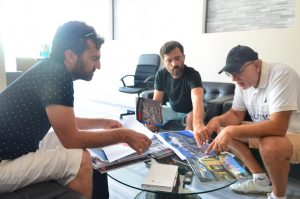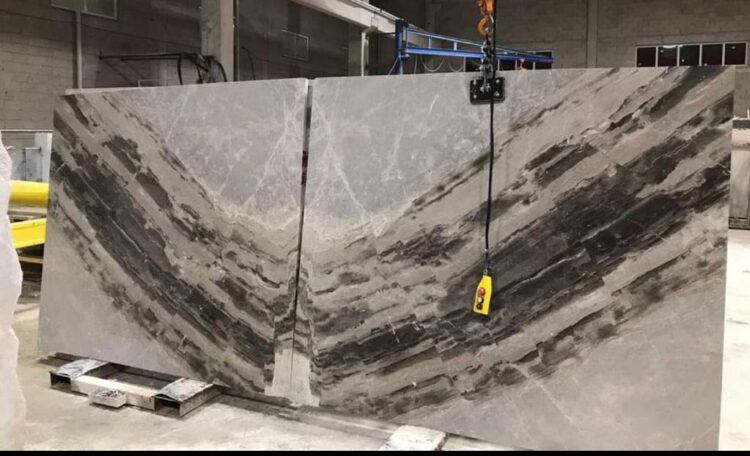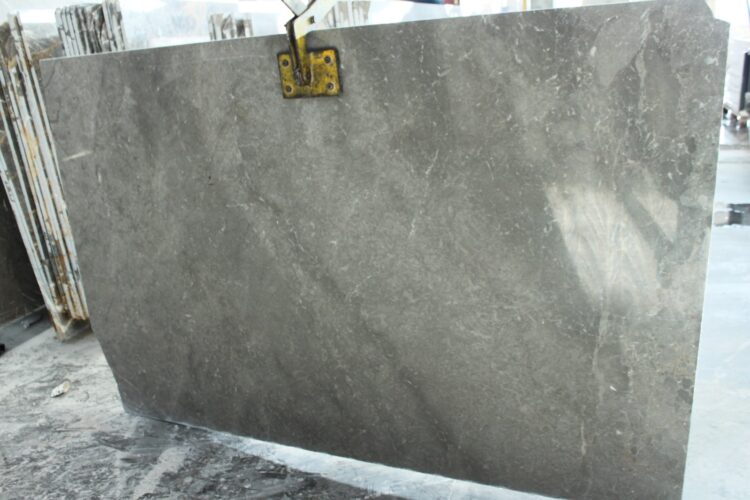Hasan Dinçer, the Chariman of the Board of Management of MARMIAD, which was established by the owners of quarries and factories in Marmara Island, claimed that problems in the Island have been growing constantly. He stated that the citizens of Marmara Island, who have been earning their lives from the 3500 years of quarries in the island, are highly uneasy about these developments.
The Marmara Island, named after the antique marble quarries it has, has been the main provider of marble since the antique era. The Island, which is known to be the supplier of natural stone during the construction of the world’s biggest temple, Artemis Temple, that was built in 560-550 B.C. holds 14 % of the world natural stone reserves. Today the Island will have to stop production due to the natural protection site Law.
The Marmara Island… An Island, which has been adorning the most prominent constructions with its unique marble ever since the antique period. We took the road to visit the antique quarries that has named the Marmara Island. Marmara Island welcomed us with a shiny face. We met Hasan Dinçer, the president of MARMİAD in order to receive some information about the island. President Hasan Dinçer and Mustafa Dinçer, the member of management board of Türer Mining, hosted us in a restaurant with the view of Marmara Sea. We headed to the headquarters of MARMIAD all together after a nice conversation accompanied by breakfast. The President has begun to tell us the story. President Dinçer said that the “Natural Protected Area” problem is the priority issue in the Island, since it poses various obstacles for the sector.

How Will the Natural Protection Site Effect Marmara Island?
Hasan Dinçer is the president of Marmara Island Marble and Mineral Producers’ and Businessmen Association, which has been actively serving in the sector for 4 years. He says that the Marmara Island is under the danger of stopping natural stone production. “As we made our applications for the establishment of an Organized Industry Zone in the Island, we found out that a certain amount of the marble quarries in Marmara Island will be included in the scope of natural protection sites. We were aiming to establish an Organized Industry Zone, which will gather all industrial entities in the Island. There is not a convenient field in Saraylar since it is a forestland. We found a convenient field on 8 km nearby Saraylar. However, when we went to apply for the establishment of this Organized Industry Zone, we found out about the protected area challenge. To our surprise, authorities have been working on this for 2 years. It is desperate that we have not been informed about this issue over the course of those 2 years. If you declare a 2000-year-old marble producing region as the field of protection, it means you put an end to marble production here. This new declaration would finish marble production here in 10 years.
Turkish Natural stone has been used as a construction stone in Venice, Egypt and Turkey throughout the centuries.However, natural stone production is being restricted due to certain legal regulations. Unfortunately while we are working hard in order to increase production, export and employment such regulations famage our effords in a negative way.”
The Importance of Marmara Marble
Dinçer said: “The first settlers of the island were Milesians. The marble quarries in Marmara Island Saraylar Town were very active during Miletus Roman period. During this period, architectural and sculptural works were produced in marble quarries and were shipped to all Anatolian, Adriatic, the Mediterranean and Black Sea coasts with Roman trade vessels. In the Byzantine period, columns and column tops used in church and monastery architecture were mostly made from Marmara Marble. The most important finding that shows how marble processing techniques developed during the Byzantine period in the Marmara Island is the 4.45-meter diameter column at Harmantaş, which weighs 180 tons. Süleymaniye Mosque, Dolmabahçe Palace, Çırağan Palace and many other works of art from the period of Ottoman period were covered with Marmara marble.
“This Decision should be Ceased”
“It is not wise to take the quarries in Marmara Island, which has been providing the main natural stone materials to the most prominent structures, palaces and mosques since the antique era, into the scope of natural protected area. The marble of Marmara Island does not have an alternative in the world. The quarries have created a unique mining culture with their historical texture and past. In terms of economic necessity, the region has become a mining town. This draft decision must be abandoned as soon as possible. We expect the support of the whole industry in this regard. ”
A Big Port will contribute to the Island
Another problem of the island is the port. The biggest buyers of the marble produced here before the Arab Spring was Syria. The war in Syria has hit the island’s marble exports seriously. Adana used to export 200 thousand cubic meters of blocks in 2008-2009, but today this number has reduced to 40 thousand cubic meters. President Dinçer emphasizes that because of these export losses, the producers in the island has reduced marble production by 60-70 percent. This loss should be recovered with the construction of a big Port in the Island. Dinçer explains this as follows: “These quarries have been operating for about 2000 years. The loss in block exports caused decrease in production as well. We need a big port to pave the way for the development of natural stone sector here. We receive stone chips demands from South America and the Far East market, but we cannot respond positively to these requests because of our transportation problems. We cannot install more than 40 thousand tons of stone from the port. In order to reach the demanding market, at least 50 thousand tons of stone must be installed. Thus, we need a big port in order to solve shipping problems in this Island. If we have a big port, our marble exports and employment rates will increase accordingly. A year ago, we reported this request to the Mayor of the Metropolitan Municipality. He seemed to lean towards the subject. I hope, this need of the Island will be met in a short period. However, first, the protected site problem needs to be solved. ”
Harms of Mineral Law to Natural Stone Sector
Referring to the work carried out by the Ministry regarding the declaration of the quarries region as a natural protected area, Dinçer said: “There are places that are known to be the homeland of mineral with their history and geography like the Marmara Island. The only means of living of the people who live in this island is natural stone production. If a third person wins the bid and takes over these quarries via the new Mineral law, the genuine settlers of the island will have to leave the island. This situation will create turmoil and social economic levels will decrease accordingly. On the other side, the marble of this island has rich color, texture, pattern and quality varieties even in a short distance. There are 4 or 5 selections even in a single quarry. If we think that there are 30-40 marble quarries close together in a mining district, it is not even possible to market and manufacture such a wide variety of marble diversity. It is not possible for 30-40 companies to unite either. People had once chosen to live here since there is abundance of marble and mineral reserves. Therefore, if the government declares this region as the zone of mineral of forbids mineral production here, the people of the island seek for their rights. Because it is the means of living. But I can not say the same thing to people living in Anatolia. According to them, the miners come, cut the forests of the village and destroy the lands, where they have lived for years. This is how they usually see marble producers. If all the associations and the sector contact the politicians, I believe that they cannot enforce this law. As soon as we heard about this law, we acted immediately. We are fighting for our rights. Turkish stone is not preferred in public areas anymore, so we are trying to sell our natural stone by visiting nearly 200 countries. We have a tax burden of 63 percent. They do not know how big R & D work mining requires. We are trying to make ourselves understood by people who are not experts in the work. This is a grave situation. The sector needs to be united and struggle urgently. “

























 +90 532 585 51 95
+90 532 585 51 95 +90 532 585 51 95
+90 532 585 51 95